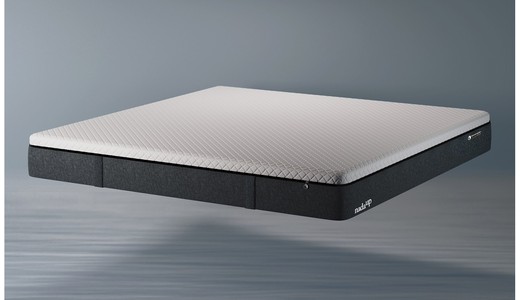Tuned to Heal: The Resonance Frequency of the Human Body and the Power of Deep Sleep

We live in a world of invisible vibrations. Every atom, every organ, and every human being carries a unique frequency. This is not poetry—it is physics. What if your fatigue, emotional imbalance, or chronic discomfort was not only due to poor lifestyle choices but because your body is out of tune?
Much like a musical instrument, the body must be tuned to its natural frequency to operate in harmony. And sleep—especially deep, restorative sleep—is the natural recalibration tool the body uses each night. Yet modern life floods us with stress, noise, artificial light, and electromagnetic fields that disrupt this resonance.
Let us explore what resonance truly means, how the human body interacts with frequencies, and how NadaUp mattresses are designed not only for comfort but as a daily tool for vibrational healing.
What Is Resonance? And Why Should You Care?
Resonance is the phenomenon where a system vibrates with greater amplitude at specific frequencies—its natural frequencies. This principle is seen in physics, acoustics, and even biology.
In simple terms, your body has its own resonance frequency—a rhythm at which it thrives. Research shows that every organ has a preferred frequency. The heart, brain, bones, and even cells exhibit measurable vibrations (Beal, 2022). When these become misaligned, dysfunction occurs.
According to Freeman and Geers (2016), the body’s tissues are “mechanically responsive structures” where specific frequencies can promote healing or, conversely, cause stress if discordant.
“Each organ and tissue of the human body has its own frequency and responds positively to external frequencies that match its natural vibratory signature.”
— Beal, T. (2022). The Healing Frequencies of the Human Body
Do We All Have Different Resonance Frequencies?
Yes. Just as no two voices are exactly the same, each person’s system vibrates differently—shaped by genetics, trauma, stress levels, emotions, and even nutrition.
Bioelectromagnetic studies confirm that each individual has measurable differences in body frequency (Zhadin, 2001). This means there is no universal “fix,” but harmony can always be restored.
Is Sleep Connected to Resonance?
Absolutely. Deep sleep—particularly non-REM slow-wave sleep—slows brain waves to delta frequencies (0.5–4 Hz). These coincide with the natural resonance range of cells and tissues (Steriade et al., 1993). This is not coincidence—it’s evolutionary design.
During this phase:
-
Hormones like melatonin are released
-
Cellular repair is optimized
-
The parasympathetic nervous system dominates, bringing the body into balance
Sleep is the time when the body retunes itself to health. Poor sleep means this self-correction fails, leading to long-term disharmony.
How NadaUp Mattresses Support Biological Resonance
NadaUp is more than just a mattress. It is a scientifically designed tool for restoring resonance.
The Mammoth Medical Grade™ foam, tested by scientists at the University of Oxford and Northumbria University, has demonstrated proven benefits for sleep quality, pressure relief, and thermoregulation.
Here’s how NadaUp supports resonance:
-
Pressure Relief & Spinal Alignment: Encourages muscle relaxation and allows subtle frequencies to flow through the spine and fascia.
-
Temperature Regulation: Cooling properties reduce stress and promote deep sleep—the state optimal for vibrational healing.
-
Motion Isolation: Eliminates disruptions, maintaining stable wave patterns through the night.
-
MHRA Approval & NICE Compliance: Confirms clinical reliability in delivering measurable health benefits.
NadaUp is a philosophy of healthy lifestyle, harmony, and conscious self-care—and sleep is its foundation.
Steps to Reconnect with Your Natural Resonance
-
Reduce EMF Exposure at Night – Turn off WiFi routers and keep devices away from your sleep zone.
-
Align Your Environment – Use dim lights, calming sounds (like 432 Hz music), and minimal clutter.
-
Practice Stillness Before Sleep – Breathing, journaling, and meditation activate low-frequency brain waves.
-
Choose the Right Sleep Surface – Not all mattresses are neutral. NadaUp’s clinically tested design aligns both physical and energetic balance.
-
Connect with Nature – Walking barefoot, sun exposure, and humming mantras help restore resonance with Earth’s natural frequency (~7.83 Hz).
A General Story to Reflect On
Imagine someone living under constant deadlines, noise, and screens. They collapse each night onto a generic mattress, and despite 8 hours of sleep, wake up exhausted. They are not truly sleeping—they are surviving.
Now imagine the same person making small changes: switching off WiFi, practicing breathing before bed, and sleeping on a NadaUp mattress designed for therapeutic rest. Within weeks, their sleep deepens, energy returns, and their body vibrates back into natural harmony.
We Are All One Frequency Field
This is not mysticism—it’s quantum biology. Every part of our being resonates with the environment. When we sleep in harmony, we awaken in balance.
As Gregg Braden writes in The Divine Matrix (2007):
“The field is the sole governing agency of the particle. We are not separate from the world we observe.”
Conclusion: Healing Begins with Harmony
Resonance is not a luxury—it is a biological necessity. The more attuned we are to our internal frequencies, the more we experience joy, vitality, and clarity.
NadaUp mattresses are not just about comfort or pain relief—they are your gateway to vibrational alignment. When you sleep in resonance, you wake up in your power.
References
Beal, T. (2022). The Healing Frequencies of the Human Body: A Practical Guide to Sound Therapy and Vibrational Medicine. Inner Traditions.
Braden, G. (2007). The Divine Matrix: Bridging Time, Space, Miracles, and Belief. Hay House.
Freeman, M., & Geers, J. (2016). "Bio-mechanical and vibrational properties of human tissues." Journal of Biomedical Physics & Engineering, 6(3), 157–163.
Steriade, M., McCormick, D. A., & Sejnowski, T. J. (1993). "Thalamocortical oscillations in the sleeping and aroused brain." Science, 262(5134), 679–685. https://doi.org/10.1126/science.8235588
Zhadin, M. N. (2001). “Review of Russian literature on biological action of DC and low-frequency AC magnetic fields.” Bioelectromagnetics, 22(1), 27–45. https://doi.org/10.1002/1521-186X(200101)22:1<27::AID-BEM1004>3.0.CO;2-4









